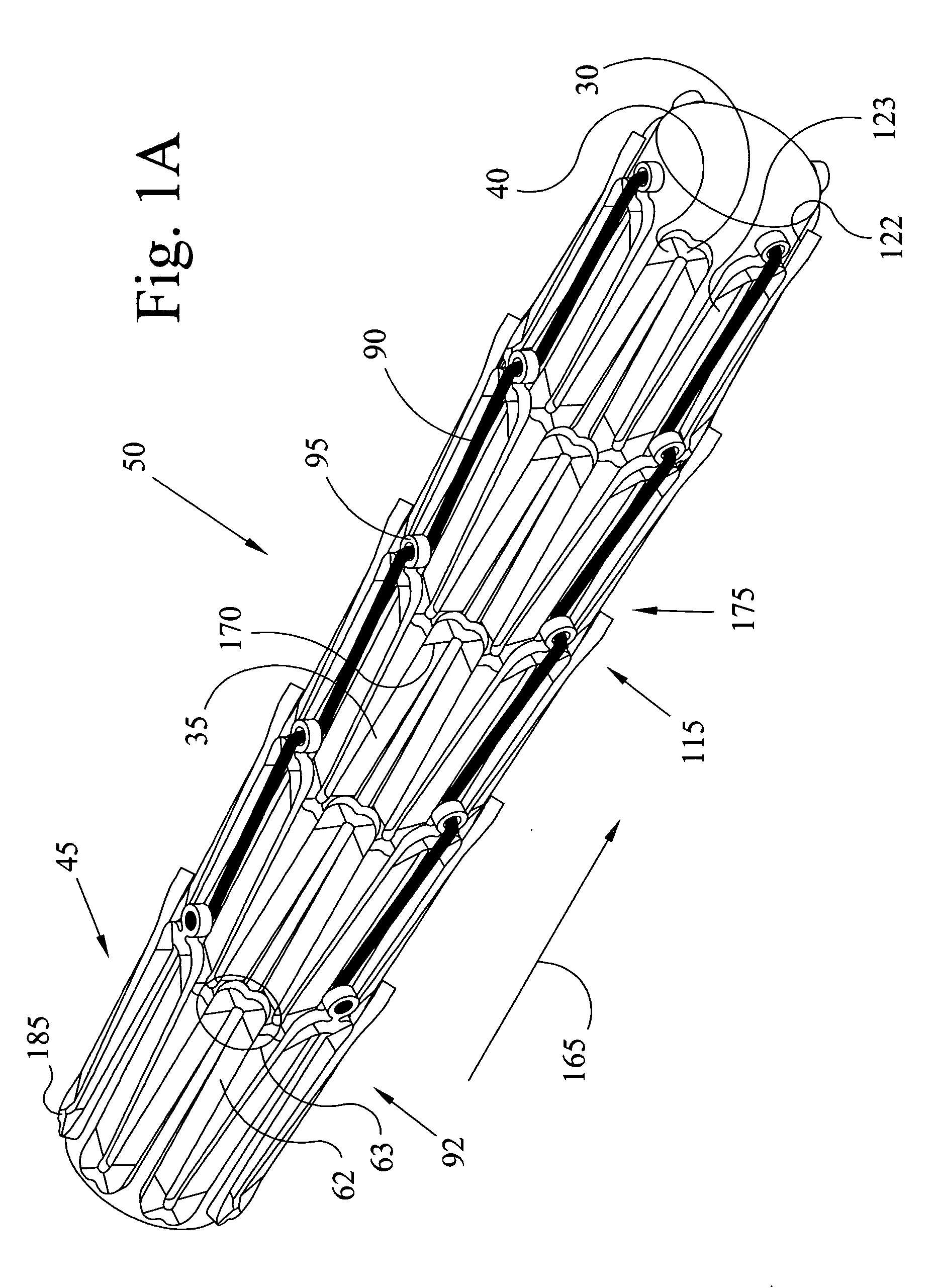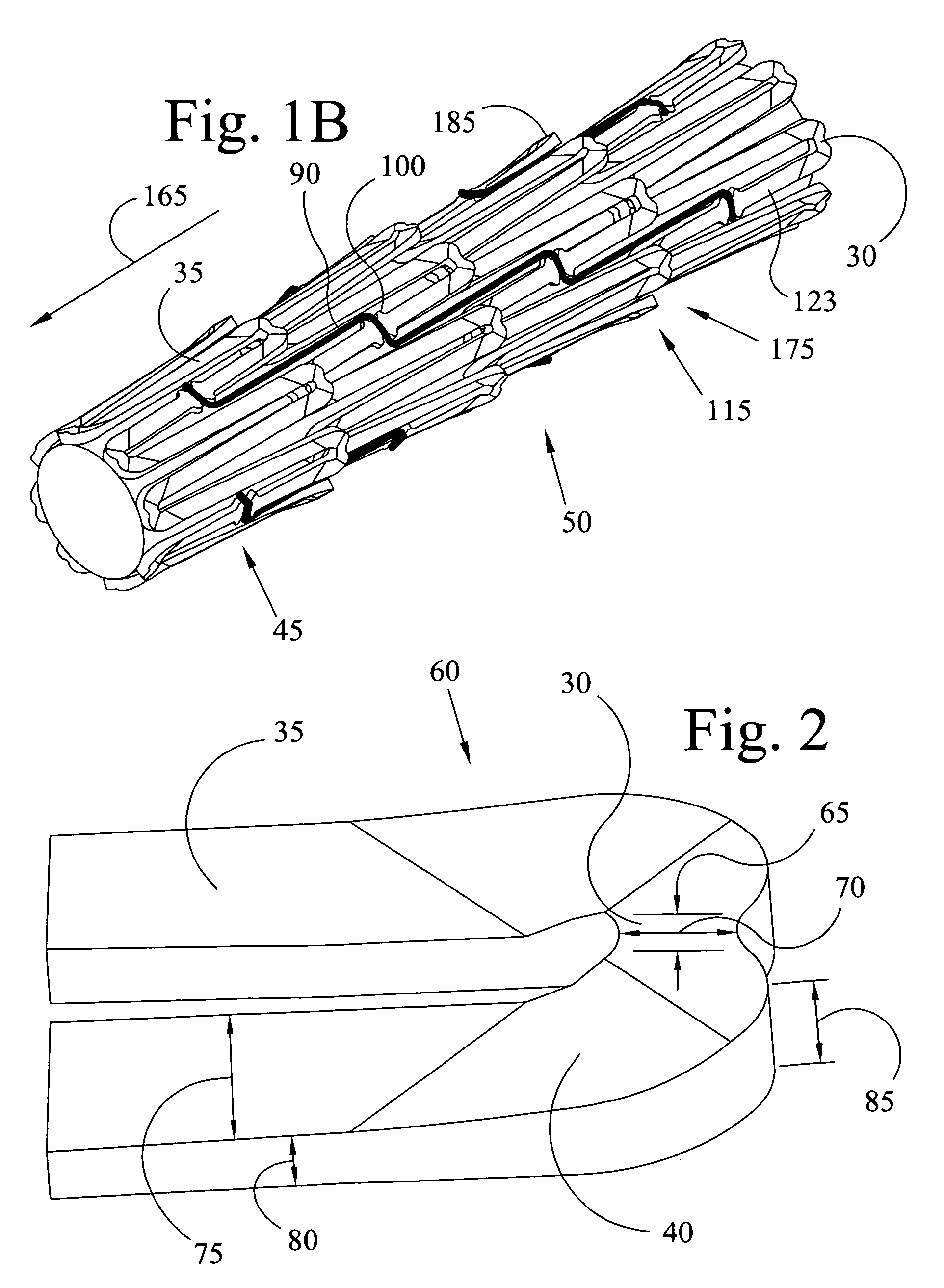Peripheral overlap stent
- Summary
- Abstract
- Description
- Claims
- Application Information
AI Technical Summary
Benefits of technology
Problems solved by technology
Method used
Image
Examples
Embodiment Construction
[0058]Embodiments of the present invention have a plurality of hinges (30) and struts (35) that are connected together via transition regions (40) as shown in FIGS. 1A, 1B, and 2. The embodiments of FIGS. 1A and 1B have joining elements (42) that are connecting fibers (90) to connect segments (45) of the stent (50). Alternate embodiments have joining elements (42) that are spacing members (55) to connect segments (45) as shown in FIGS. 3A and 3B. The struts (35) form the elongated elements (62) of the stent wall structure (60) and the hinges (30) and transition regions (40) form the junctional regions (63) of the wall structure (60) where one elongated element (62) joins with another elongated element (62). During deployment the hinge undergoes plastic deformation due to a small hinge length (65) and hinge width (70) (see FIG. 2) that focuses the expansion deformation as the stent (50) is exposed to a balloon dilation or other mechanical dilation. The strut (35) has a very large str...
PUM
 Login to View More
Login to View More Abstract
Description
Claims
Application Information
 Login to View More
Login to View More - R&D
- Intellectual Property
- Life Sciences
- Materials
- Tech Scout
- Unparalleled Data Quality
- Higher Quality Content
- 60% Fewer Hallucinations
Browse by: Latest US Patents, China's latest patents, Technical Efficacy Thesaurus, Application Domain, Technology Topic, Popular Technical Reports.
© 2025 PatSnap. All rights reserved.Legal|Privacy policy|Modern Slavery Act Transparency Statement|Sitemap|About US| Contact US: help@patsnap.com



